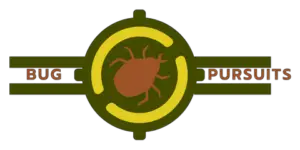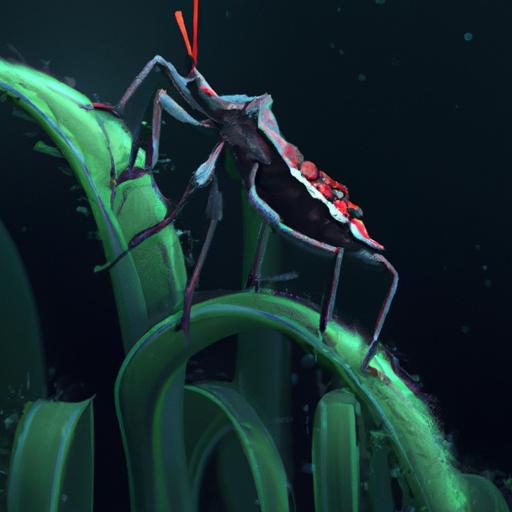Have you ever encountered a bug and wondered what type of insect it was? If so, you may have encountered either a stink bug or an assassin bug.
But, what are the differences between these two types of bugs? In this article, you’ll learn all you need to know about the key differences between stink bugs and assassin bugs.
We’ll cover what they are, where they’re found, and what they eat.
By the end of the article, you’ll be an expert on the differences between these bugs.
Ready to learn more? Let’s get started!
Table of Contents
Short Answer
Stink bugs are plant-eating insects that release a foul odor from their scent glands when they are disturbed.
They have a shield-like body and are typically green or brown in color.
Assassin bugs are predatory insects that feed on other insects.
They have a long, narrow body and are usually black, brown, or orange in color.
Both types of bugs belong to the order Hemiptera, but they have different feeding habits and appearances.
What is a Stink Bug?
Stink bugs are a type of Hemiptera, a large order of insects that includes aphids and cicadas.
They got their name from their tendency to emit a foul smell when they are threatened or disturbed.
Stink bugs are typically found in gardens and plants, where they feed on the juices of fruits, stems, and leaves.
They range in color from light grey to black and have a distinctive shield-shaped body.
Stink bugs can be a nuisance to gardeners, as they can cause significant damage to crops.
Stink bugs are also known to congregate in large numbers, which can be hard to manage.
In some cases, they can even become a health hazard, as their presence can attract other pests like rats, mice, and cockroaches.
To get rid of them, its important to identify the source of the infestation and apply the appropriate treatment.
What is an Assassin Bug?

An assassin bug is an insect in the Hemiptera order, like the stink bug.
It is a predatory insect that typically feeds on other insects, using its long beak-like structure to inject venom into its prey.
This venom paralyzes the prey and allows the assassin bug to feed on it.
Assassin bugs are found in warmer climates, such as deserts and tropical areas.
They tend to be more aggressive than other Hemiptera insects, and they can bite humans if provoked.
Assassin bugs can also spread diseases, so it’s important to take precautions when encountering them.
Assassin bugs come in a variety of colors and shapes, and can be identified by their long beak-like structure and their tendency to be active during the day.
Where Are Stink Bugs Found?
Stink bugs are commonly found in gardens and plants, where they feed on the juices of fruits, stems, and leaves.
They often inhabit wooded areas, gardens, and pastures, as well as indoors in the winter months.
Stink bugs come in a variety of colors, including brown, gray, green, and black.
They can range in size from about 12 to 17 millimeters long.
Stink bugs are found in many parts of the world, including North America, Central America, South America, Europe, Asia, and Africa.
In the United States, they are most commonly found in the eastern and southern states.
In Europe, they are found in many countries, including Germany, France, Italy, and the United Kingdom.
In Asia, stink bugs can be found in India, China, Japan, and Korea.
Stink bugs have become an increasing problem in the United States in recent years.
This is because the introduction of certain species of stink bugs from other parts of the world has allowed them to thrive in the United States.
As a result, stink bugs have become a nuisance for many homeowners, gardeners, and farmers.
Where Are Assassin Bugs Found?

Assassin bugs are found in a variety of warm climates, such as deserts and tropical areas.
They are most commonly seen in the United States in the Southwestern states, including Arizona, New Mexico, California, and Texas.
They have also been spotted in the southeastern states, including Florida, Georgia, and Alabama.
Assassin bugs prefer to live in dry, open areas such as deserts, grasslands, and woodlands.
They are most commonly found in areas with dense vegetation, such as shrubs and trees.
They also prefer to live in areas with plenty of insects, such as near gardens and farms.
Assassin bugs are active during the day and hide in vegetation or crevices during the night.
They can be seen flying around in search of food or resting on the ground or on plants.
They are also known to hide in crevices, such as wood piles, logs, and under rocks.
In summary, assassin bugs are found in warm climates throughout the United States, particularly in the desert Southwest.
They prefer dry, open areas with plenty of vegetation and insects.
They can be seen flying around during the day and hiding in crevices at night.
What Do Stink Bugs Eat?
Stink bugs are named for their tendency to emit a foul smell when they are threatened, but they are actually quite harmless creatures.
In fact, they are mostly plant-eaters and are quite beneficial to gardens and plants, as they feed on the juices of fruits, stems, and leaves.
Stink bugs prefer to feed on soft fruits like apples and pears, as well as other soft-bodied plant matter such as sap and petals.
They also have a taste for certain vegetables, such as beans and corn, and can cause significant damage to crops if left unchecked.
Stink bugs have piercing-sucking mouthparts, which they use to suck the juice out of their food.
They have a pair of long, thin antennae that help them detect food sources and navigate their way around.
They also have a pair of short wings that they can use to fly, although they are not particularly agile flyers.
In addition to their food sources, stink bugs also need to drink water in order to survive.
They typically find these sources in moist soil, near ponds and lakes, or in the dew on plants.
Stink bugs also need certain minerals, such as calcium and phosphorus, which can be found in decaying organic matter.
It is important to note that stink bugs can become a nuisance if their population grows too large, as they can damage crops and gardens.
If you suspect that you have a stink bug infestation, it is important to take action quickly in order to keep them from becoming a problem.
What Do Assassin Bugs Eat?

When it comes to the diet of assassin bugs, they are predators that feed on a variety of other insects.
They typically hunt for their prey by using their long, beak-like structure on their head to inject venom into their victims.
The venom paralyzes the prey, which allows the assassin bug to consume it at its own leisure.
The types of insects they feed on include caterpillars, grasshoppers, beetles, and aphids.
They also feed on the eggs of other insects as well.
Assassin bugs are typically found in warmer climates, such as deserts and tropical areas, where their prey is plentiful.
They tend to be most active during the day, when their prey is out and about.
Assassin bugs are also known to hunt in packs, which allows them to take down larger prey more easily.
Due to their predatory nature, assassin bugs are beneficial to the environment.
They help to control the population of other pesky insects, such as aphids, which can often damage gardens and crops.
For this reason, many gardeners encourage their presence in their gardens.
While assassin bugs may look scary, they are generally harmless to humans.
They are not known to bite or sting, although they may inject a mild venom if provoked.
It is best to leave assassin bugs alone and admire them from a distance.
Key Differences Between Stink Bugs and Assassin Bugs
Stink bugs and assassin bugs may both belong to the Hemiptera order, but there are some key differences between them that set them apart. The most obvious difference between the two is their diet: stink bugs are plant-eaters that feed on the juices of fruits, stems, and leaves, while assassin bugs are predatory insects that feed on other insects.
Stink bugs are aptly named for their tendency to emit a foul smell when they are threatened.
This smell can be quite strong and is often used as a defense mechanism to keep predators away.
They are most commonly found in gardens and plants, where they feed on the juices of fruits, stems, and leaves.
Assassin bugs, on the other hand, are predatory insects that feed on other insects.
They have a long, beak-like structure on their head that they use to inject venom into their prey.
This venom is used to paralyze their prey and make them easier to consume.
Assassin bugs are often found in warmer climates, such as deserts and tropical areas, where they can take advantage of the abundance of insects that live in these areas.
In summary, the key difference between stink bugs and assassin bugs is their diet.
Stink bugs are plant-eaters while assassin bugs are predators.
It’s important to remember that both types of bugs can be found in many different climates and habitats, and both play important roles in the environment.
Final Thoughts
Knowing the key differences between stink bugs and assassin bugs can help you identify and manage these two insects in your home or garden.
Stink bugs are plant-eaters and are found in gardens and plants, while assassin bugs are predators and are found in warmer climates.
If you spot either of these bugs, its important to take action quickly to prevent them from multiplying and damaging your plants.
With this knowledge, you can be prepared to deal with any infestations of stink bugs or assassin bugs.

